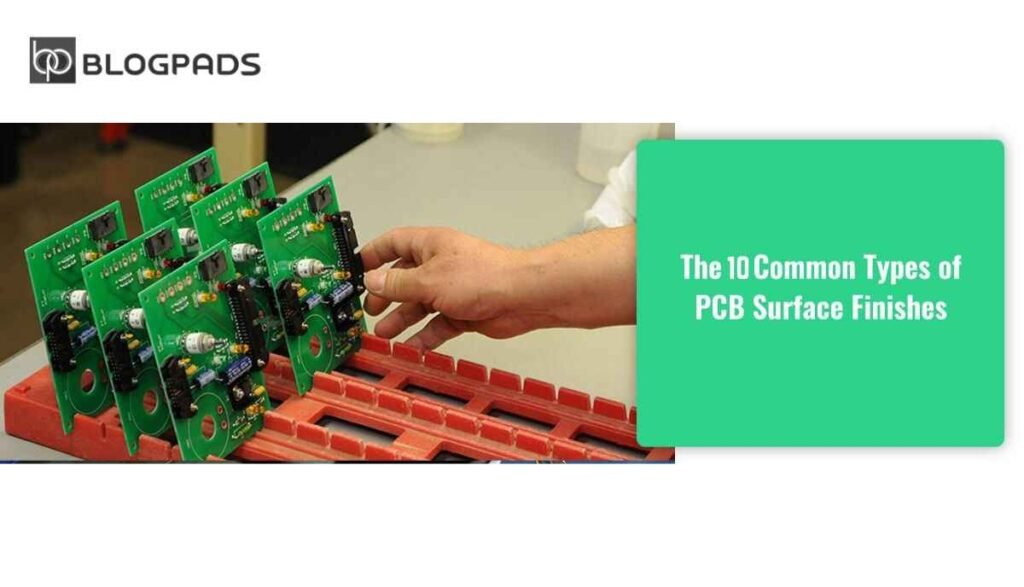1. What Are Surface Finishes?
Top 10 Most Common Types of Surface Finishes in the Electronics Industry Surface finishes are coatings or treatments applied to the external layer of a material. In the electronics industry, they’re primarily used to protect circuit boards and ensure components stay connected and functional over time. Think of them as a raincoat for your circuits, shielding them from environmental damage.
2. Why Are Surface Finishes Important?
Surface finishes are vital for several reasons:
- Corrosion Resistance: They prevent oxidation and rust.
- Electrical Conductivity: Ensures smooth current flow.
- Solderability: Makes it easier to attach components during manufacturing.
Without them, electronic devices would fail prematurely, leading to costly repairs or replacements.
3. Hot Air Solder Leveling (HASL)
What is HASL? HASL involves dipping the printed circuit board (PCB) into molten solder and then using hot air to remove excess solder.
Advantages:
- Excellent solderability.
- Long shelf life.
Disadvantages:
- Uneven surface, which can be problematic for fine-pitch components.
- Contains lead, which is harmful to the environment.
4. Lead-Free HASL
As the name suggests, this is the eco-friendly cousin of traditional HASL. Instead of lead, it uses a safer alloy.
Advantages:
- Complies with RoHS (Restriction of Hazardous Substances) standards.
- Provides similar benefits to regular HASL.
Disadvantages:
- Slightly more expensive.
- Less reliable for high-density PCBs.
5. Electroless Nickel Immersion Gold (ENIG)
ENIG is a popular surface finish in modern electronics due to its precision and durability.
How it works: A layer of nickel is chemically deposited, followed by a thin layer of gold.
Advantages:
- Highly durable.
- Excellent flatness, ideal for fine-pitch components.
- RoHS compliant.
Disadvantages:
- Expensive.
- Susceptible to black pad issues if not applied correctly.
6. Organic Solderability Preservative (OSP)
OSP is an organic-based finish that’s environmentally friendly and cost-effective.
How it works: An organic layer is applied to protect the copper beneath from oxidation.
Advantages:
- Affordable.
- Simple to apply.
- RoHS compliant.
Disadvantages:
- Short shelf life.
- Limited durability.
7. Immersion Tin
Immersion Tin involves chemically depositing a thin layer of tin onto the copper surface.
Advantages:
- Excellent solderability.
- Uniform surface, ideal for fine-pitch components.
Disadvantages:
- Susceptible to tin whiskers, which can cause short circuits.
- Limited shelf life.
8. Immersion Silver
This finish applies a thin layer of silver to the copper surface, offering a balance of cost and performance.
Advantages:
- Good solderability.
- Provides excellent electrical conductivity.
- Environmentally friendly.
Disadvantages:
- Prone to tarnishing if not stored properly.
- Limited durability in harsh environments.
9. Electrolytic Nickel Gold
Electrolytic Nickel Gold is a robust and high-performance finish often used in high-end electronics.
Advantages:
- Exceptional durability.
- Ideal for high-frequency applications.
Disadvantages:
- Expensive.
- More complex to apply.
10. Hard Gold
Hard Gold, often used for edge connectors and keypads, is known for its durability.
Advantages:
- Extremely wear-resistant.
- Long lifespan.
Disadvantages:
- High cost.
- Not suitable for soldering.
11. Comparison of Surface Finishes
| Finish | Durability | Cost | Solderability |
| HASL | High | Low | Excellent |
| Lead-Free HASL | Medium | Medium | Good |
| ENIG | High | High | Excellent |
| OSP | Low | Low | Moderate |
| Immersion Tin | Medium | Medium | Excellent |
| Immersion Silver | Medium | Medium | Good |
| Electrolytic Nickel Gold | Very High | Very High | Moderate |
| Hard Gold | Very High | Very High | Poor |
12. Choosing the Right Surface Finish
Selecting the right finish depends on several factors, including:
- Application: High-frequency devices may require electrolytic finishes.
- Budget: Cost-effective solutions like OSP or Immersion Tin may suffice for simpler devices.
- Environmental Concerns: Lead-free options are preferable for eco-friendly production.
Conclusion
Surface finishes may not be something you see, but they’re the silent guardians of electronics. From ensuring conductivity to providing corrosion resistance, the Top 10 Most Common Types of Surface Finishes in the Electronics Industry. Whether you’re building a simple gadget or a high-performance device, understanding these finishes is essential for success.
FAQs
1. What is the most commonly used surface finish in the electronics industry? Electroless Nickel Immersion Gold (ENIG) is one of the most popular finishes due to its durability and compatibility with modern electronics.
2. Why is lead-free HASL preferred over traditional HASL? Lead-free HASL is environmentally friendly and complies with RoHS standards, making it a safer choice for manufacturing.
3. How do I choose the best surface finish for my project? Consider factors like budget, environmental concerns, and the specific application requirements of your device.
4. What are the drawbacks of using OSP as a surface finish? OSP has a short shelf life and limited durability, making it less suitable for complex or long-lasting devices.
5. Can I use the same surface finish for all types of electronics? No, the choice of surface finish depends on the specific needs of the device, such as conductivity, durability, and environmental exposure.

